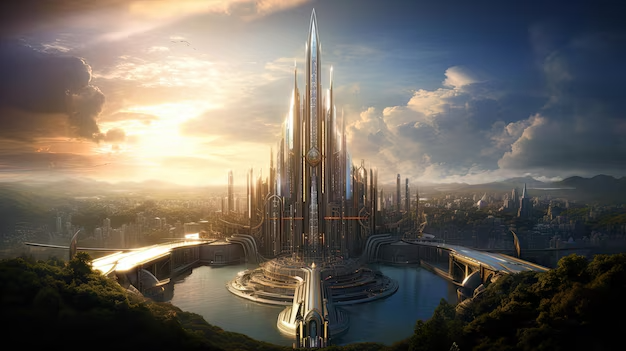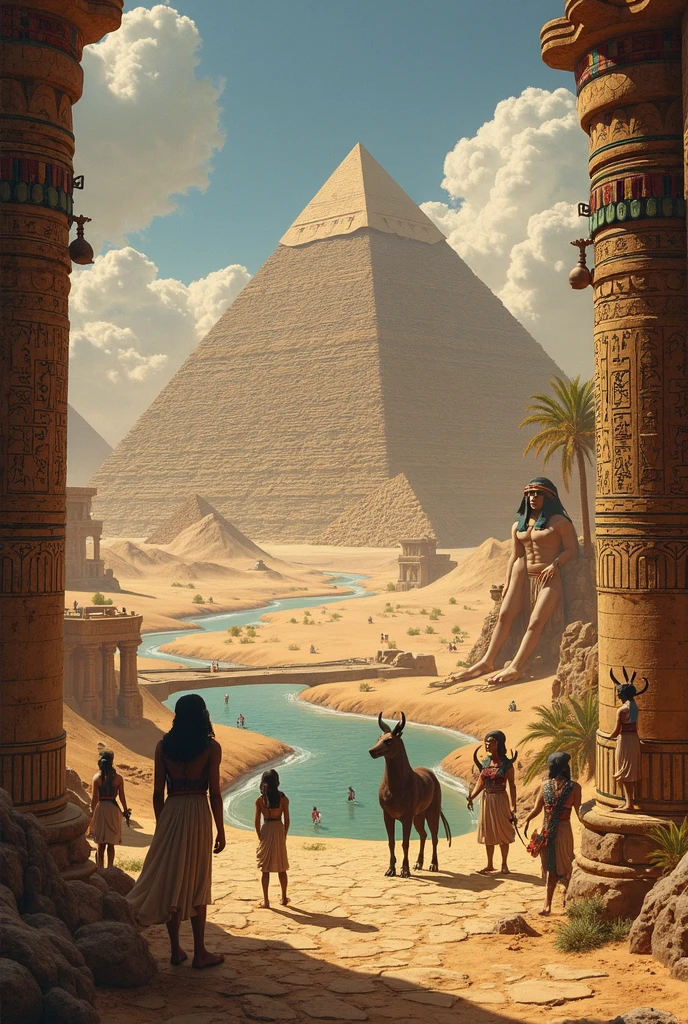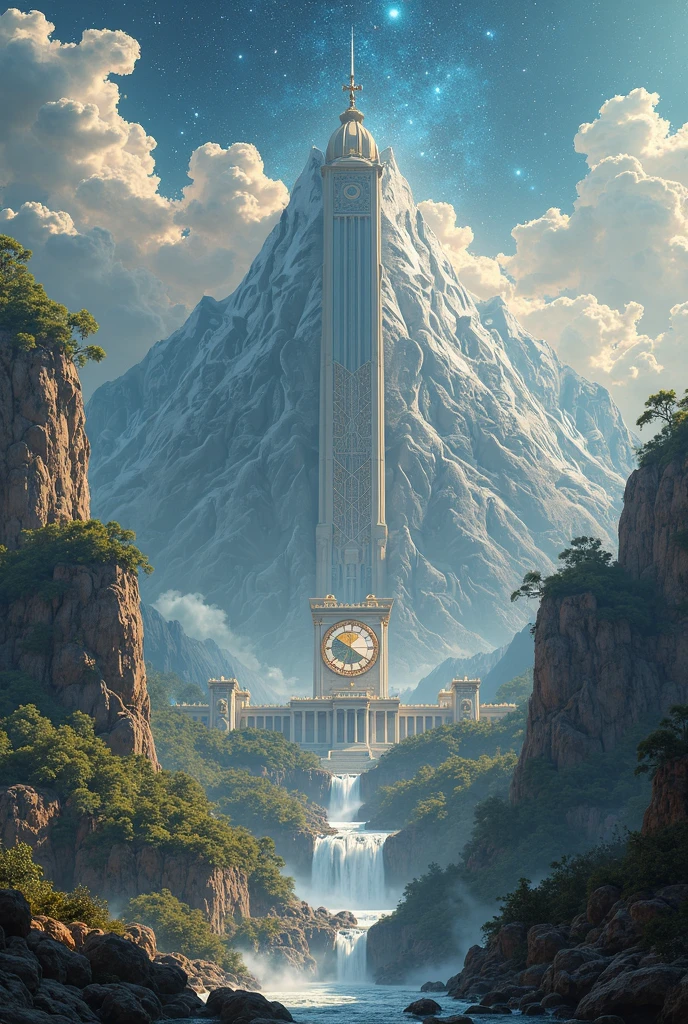Persian Mythology: The Cosmic Battle Between Ahura Mazda and Angra Mainyu
Persian mythology, rooted in the ancient teachings of Zoroaster, presents a rich tapestry of divine beings, cosmic struggles, and moral teachings. At its core lies the eternal conflict between Ahura Mazda, the god of light and wisdom, and Angra Mainyu, the spirit of darkness and chaos. This dualistic worldview shaped Persian culture, religion, and philosophy for centuries, influencing later traditions like Judaism, Christianity, and Islam.
The Origins of Persian Mythology
Persian mythology finds its roots in the teachings of the prophet Zoroaster (or Zarathustra), who lived around 1500-1200 BCE. His revelations, compiled in the sacred text known as the Avesta, introduced a revolutionary monotheistic framework with dualistic elements. Unlike earlier polytheistic traditions, Zoroastrianism emphasized moral choice, free will, and the ultimate triumph of good over evil.
Key Texts and Sources
- Avesta: The primary collection of sacred Zoroastrian texts, including hymns, rituals, and laws.
- Gathas: The oldest part of the Avesta, composed by Zoroaster himself.
- Bundahishn: A later Zoroastrian text detailing creation myths and cosmology.
- Denkard: An encyclopedia of Zoroastrian beliefs and practices.
Ahura Mazda: The Wise Lord
Ahura Mazda, meaning “Wise Lord,” is the supreme god in Persian mythology. He represents light, truth, and order, constantly battling the destructive forces of Angra Mainyu. Unlike the capricious gods of other ancient pantheons, Ahura Mazda is consistently benevolent, just, and all-knowing.
Attributes of Ahura Mazda
| Attribute | Meaning |
|---|---|
| Asha | Truth and cosmic order |
| Vohu Manah | Good mind and wisdom |
| Spenta Mainyu | Holy or creative spirit |
| Khshathra Vairya | Desirable dominion |
The Dualistic Cosmos: Ahura Mazda vs. Angra Mainyu
The central conflict in Persian mythology pits Ahura Mazda against Angra Mainyu (also called Ahriman), his eternal adversary. This dualism isn’t equal—while Ahura Mazda is uncreated and eternal, Angra Mainyu is a destructive force that will ultimately be defeated.
The Amesha Spentas and Their Opposites
Ahura Mazda created six divine beings called the Amesha Spentas (“Holy Immortals”) to aid in maintaining cosmic order. Each has a counterpart among the daevas (evil spirits) created by Angra Mainyu:
- Vohu Manah (Good Mind) vs. Aka Manah (Evil Mind)
- Asha Vahishta (Truth) vs. Indra (Deceit)
- Khshathra Vairya (Desirable Dominion) vs. Saurva (Tyranny)
- Spenta Armaiti (Holy Devotion) vs. Taromaiti (Discontent)
- Haurvatat (Wholeness) vs. Taurvi (Thirst)
- Ameretat (Immortality) vs. Zairicha (Decay)
Zoroaster and the Revelation of Truth
The prophet Zoroaster received divine revelations from Ahura Mazda, which formed the basis of Zoroastrianism. His teachings emphasized:
- The importance of moral choice between good and evil
- The concept of individual judgment after death
- The coming of a savior figure (Saoshyant) who would renew the world
- The final defeat of Angra Mainyu and the resurrection of the dead
For more on Zoroaster’s life and teachings, visit Encyclopedia Britannica.
The Concept of Fravashi in Persian Mythology
One of the most fascinating concepts in Persian mythology is the Fravashi—divine guardian spirits that exist before birth and continue after death. These celestial doubles represent:
- The pre-existing souls of humans and animals
- Protective spirits that guide individuals
- Warrior spirits that battle against evil
- The ideal form of each being
The Role of Fravashis in Creation
According to Zoroastrian texts, Ahura Mazda consulted with the Fravashis before creating the material world. They agreed to descend into physical forms to help combat Angra Mainyu‘s corruption.
Rituals and Practices in Ancient Persia
Zoroastrian worship centered around fire temples, where sacred flames representing Ahura Mazda‘s light burned continuously. Key practices included:
| Practice | Purpose |
|---|---|
| Yasna ceremony | Central ritual involving offerings and recitation from the Avesta |
| Navjote | Initiation ceremony for Zoroastrian children |
| Sky burial | Exposure of dead bodies to prevent contamination of earth or fire |
| Festival of Nowruz | New Year celebration marking the victory of light over darkness |
Learn more about Zoroastrian rituals at Heritage Institute.
The Legacy of Persian Mythology
Persian mythology’s influence extends far beyond ancient Iran. Its concepts of:
- A supreme benevolent god (Ahura Mazda)
- A dualistic cosmic struggle
- Individual judgment after death
- A final apocalypse and renewal
profoundly influenced Judaism during the Babylonian exile, and through Judaism, Christianity and Islam. Even today, elements of Persian mythology persist in Iranian culture and the practices of modern Zoroastrians.
For a deeper exploration of Persian mythology’s influence, see World History Encyclopedia.
Descubre más artículos fascinantes sobre mitología y cultura en nuestra web, y no olvides seguirnos en facebook.com/zatiandrops para contenido exclusivo.
The Yazatas: Divine Beings of Persian Mythology
Beyond the Amesha Spentas, Persian mythology features a host of lesser divine beings called Yazatas (“Worthy of Worship”). These benevolent entities serve Ahura Mazda and assist humans in their spiritual battles against Angra Mainyu. Each Yazata governs specific aspects of nature or human experience:
| Yazata | Domain | Symbolism |
|---|---|---|
| Mithra | Covenants, sun, justice | Oath-keeping and cosmic order |
| Anahita | Waters, fertility, wisdom | Life-giving forces and purity |
| Verethragna | Victory, war, courage | Divine warrior against evil |
| Tishtrya | Rain, stars, agriculture | Celestial bringer of life |
The Cult of Mithra
Among the Yazatas, Mithra held particular importance, eventually developing into the separate Mithraic mysteries that spread throughout the Roman Empire. Originally the god of contracts and dawn, Mithra became associated with:
- Military valor and brotherhood
- Solar symbolism and seasonal cycles
- Initiation rituals and secret worship
- The slaying of the cosmic bull (tauroctony)
The Zoroastrian Eschatology: End Times and Renewal
Persian mythology presents one of history’s most detailed apocalyptic visions. The Frashokereti (“Making Wonderful”) describes the world’s final renovation when:
- A series of three saviors (Saoshyants) appear at 1000-year intervals
- The dead resurrect for final judgment at the Chinvat Bridge
- A river of molten metal purifies all creation
- Angra Mainyu is permanently defeated
- The world returns to its perfect, uncorrupted state
The Chinvat Bridge Judgment
This hair-thin bridge serves as the ultimate test of souls. For the righteous, it widens into a broad path leading to the House of Song (paradise). The wicked find it razor-sharp, sending them into the abyss of Druj Demana (the House of Lies).
Persian Mythological Creatures and Monsters
The battle between cosmic forces manifests in Persian mythology’s rich bestiary. These creatures often symbolize moral concepts or natural phenomena:
- Azi Dahaka: Three-headed dragon embodying tyranny (later Zahhak in Shahnameh)
- Simurgh: Benevolent phoenix-like bird representing wisdom and healing
- Divs: Demonic beings serving Angra Mainyu
- Kar Fish: Giant sea creature protecting the Tree of All Seeds
- Al: Child-stealing demon representing infant mortality
The Simurgh in Persian Literature
This mythical bird appears prominently in Ferdowsi’s Shahnameh, raising the hero Zal and later assisting Rostam. Its feathers could heal, and its nest contained all medicinal knowledge—a symbol of Ahura Mazda‘s benevolent wisdom.
The Influence of Persian Mythology on Astronomy
Ancient Persians mapped their mythology onto the night sky, creating one of the earliest sophisticated celestial systems. Key astronomical connections include:
| Celestial Body | Mythological Association | Modern Equivalent |
|---|---|---|
| Tishtrya | Rain-bringing star | Sirius |
| Vanant | Defender against demons | Vega |
| Haptoiringa | Seven chieftains of the north | Ursa Major |
| Satavaesa | Protector of the south | Canopus |
Persian Mythology in the Shahnameh
Ferdowsi’s 10th-century epic Shahnameh (“Book of Kings”) preserves much pre-Islamic Persian mythology in its legendary sections. Key mythological elements include:
- The reign of the Pishdadian dynasty (mythical first kings)
- Stories of Jamshid and his magical cup (Jām-e Jam)
- The tragic tale of Zahhak and the blacksmith Kaveh
- Rostam’s seven labors (echoing ancient heroic patterns)
- The magical horse Rakhsh and other mythical creatures
The Myth of Jamshid’s Glory
Jamshid, the fourth king of the world, initially ruled with divine favor (farr), creating golden age innovations. When he grew arrogant, his farr departed, allowing Zahhak to usurp his throne—a classic Persian morality tale about hubris.
Zoroastrian Symbols and Their Meanings
Persian mythology developed powerful visual symbols that endure in Iranian culture:
- Faravahar: Winged disc representing the human soul’s journey toward Ahura Mazda
- Atar: Sacred fire symbolizing divine wisdom and purity
- Cypress Tree: Eternal life and resilience
- Barsom: Ritual twigs representing creation’s interconnectedness
- Haft Sin: Seven symbolic items for Nowruz (modern adaptation)
The Faravahar’s Complex Symbolism
This iconic motif contains layered meanings:
- The central figure represents the human soul
- Two wings symbolize good thoughts and good deeds
- The lower tail represents bad thoughts and bad deeds
- The ring signifies eternity and the cyclic nature of life
- One hand points forward (future), one holds a ring (loyalty)
Persian Mythology’s Influence on Sufism
After Islam’s arrival, Persian mythological themes transformed into Sufi mystical concepts:
| Zoroastrian Concept | Sufi Adaptation |
|---|---|
| Fravashi | Divine breath (nafas al-Rahman) |
| Chinvat Bridge | Sirat bridge in Islamic eschatology |
| Saoshyant | Mahdi/Qutb concepts |
| House of Song | Divine presence (hadra) |
This syncretism appears in works by Rumi, Attar, and other Persian mystics who used Zoroastrian imagery to express Islamic mysticism.
Modern Revival of Persian Mythology
Contemporary interest in Persian mythology manifests in:
- Academic studies of ancient Iranian religions
- Neo-Zoroastrian movements worldwide
- Influence on fantasy literature (e.g., Prince of Persia games)
- Nowruz celebrations maintaining ancient traditions
- Iranian nationalist identity building
Descubre más artículos fascinantes sobre mitología y cultura en nuestra web, y no olvides seguirnos en facebook.com/zatiandrops para contenido exclusivo.
The Role of Women in Persian Mythology
Persian mythology features several powerful female figures who embody wisdom, fertility, and martial prowess. Unlike many ancient traditions that marginalized women, Zoroastrian texts present them as active participants in the cosmic struggle:
| Figure | Role | Significance |
|---|---|---|
| Anahita | Water goddess | Source of life and purifying force |
| Daena | Personified religion | Guides souls after death |
| Spenta Armaiti | Earth goddess | Embodiment of devotion |
| Gordafarid | Warrior maiden | Shahnameh heroine who defeats enemies |
Anahita: The Complex Water Deity
This Yazata combines multiple aspects:
- Giver of fertility to women and land
- Warrior goddess who arms heroes
- Celestial river flowing from cosmic heights
- Purifier who cleanses seed and womb
The Ethical Dualism in Persian Mythology
Beyond cosmic dualism, Persian mythology establishes a sophisticated moral framework where:
- Every thought, word, and deed contributes to cosmic balance
- Humans actively participate in Ahura Mazda‘s creative work
- Evil arises from wrong choices, not divine punishment
- Agricultural labor and animal husbandry become sacred acts
The Threefold Path of Asha
Zoroastrian ethics revolve around this triad:
- Humata (Good Thoughts)
- Hukhta (Good Words)
- Hvarshta (Good Deeds)
Mythological Geography of Ancient Persia
The Avesta describes a sacred landscape where mythological events unfold:
| Location | Mythological Significance | Modern Equivalent |
|---|---|---|
| Airyanem Vaejah | Zoroaster’s birthplace | Disputed (possibly Khwarezm) |
| Mount Hara | Axis mundi where Mithra keeps watch | Alborz Mountains |
| Vourukasha Sea | Cosmic ocean containing Tree of All Seeds | Caspian Sea mythology |
| Chinvat Bridge | Judgment location | Symbolic boundary |
The Seven Climes
Persian cosmology divided the world into seven regions (Keshvars), with Iran at the center as the most perfect creation of Ahura Mazda.
Zoroastrian Afterlife Concepts
The journey of the soul after death involves several stages:
- 3 nights where the soul hovers near the body
- Judgment based on the balance of good and evil deeds
- Possible temporary punishment in Dushokh (similar to purgatory)
- Final destination in Heaven or Hell until Frashokereti
The House of Song vs. House of Lies
These afterlife realms contrast sharply:
| House of Song | House of Lies |
|---|---|
| Infinite light | Endless darkness |
| Communion with divine | Isolation and regret |
| Sweetest perfumes | Foul stenches |
Mythological Weapons and Artifacts
Persian heroes wielded divinely-crafted objects in their battles against evil:
- Mace of Keresaspa: Used to slay the dragon Srvara
- Arrow of Arash: Determined Iran’s boundaries
- Jām-e Jam: King Jamshid’s prophetic cup
- Standard of Kaveh: Revolutionary symbol against Zahhak
- Rakhsh’s Armor: Rostam’s magical horse protection
The Legend of Arash the Archer
This heroic myth explains how Iran’s borders were established when Arash shot an arrow that flew from dawn to dusk, its landing point marking the nation’s boundaries—a testament to sacrifice for cosmic order.
Agricultural Symbolism in Persian Myths
As an agrarian society, ancient Persia infused mythology with farming imagery:
- The Bull as primordial sacrifice whose body became all plants
- Haoma plant as both deity and ritual drink
- Rain as Tishtrya‘s victory over drought demon Apaosha
- Plowing as sacred act against Angra Mainyu‘s barrenness
The Myth of the First Ox
In the Bundahishn, the dying primordial ox’s body transforms:
- Hair → herbs
- Blood → grapes
- Semen → metals
- Brain → clouds
Descubre más artículos fascinantes sobre mitología y cultura en nuestra web, y no olvides seguirnos en facebook.com/zatiandrops para contenido exclusivo.


